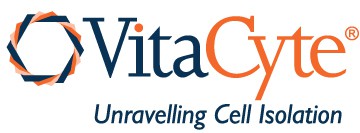The Liberase projects showed that collagenase and neutral protease were the enzymes required for the release of islets from human pancreatic tissue. Liberase contains purified class I and class II C histolyticum collagenase, and thermolysin or Dispase. Different formulations and doses were used to isolate cells from different tissues.
The identification of the C. histolyticum genes and corresponding protein domain structures of class I and class II collagenase provided new insights into the mechanism of enzyme-mediated tissue dissociation. Both classes of collagenase contain four protein domains: a large catalytic domain that cuts native collagen or gelatin, linking domain(s) (no known function), and collagen binding domain(s). Intact class I has one catalytic domain, a linking domain, and two collagen binding domains whereas intact class II has a catalytic domain, two linking domains, and one collagen binding domain. Only those forms of collagenase containing a catalytic domain and at least one collagen binding domain can degrade native collagen (collagen fibrils or fibers). Collagenase must bind via a collagen binding domain(s) to native collagen for the catalytic domain on the same molecule to digest the collagen monomer (i.e., tropocollagen). A functional catalytic domain, with or without a collagen binding domain, express gelatinase or peptidase (FALGPA or PZ peptide) activity.
Class I collagenase binds native collagen in the extracellular matrix to initiate the collagen degradation process. The collagen binding domain(s) then “pulls” the catalytic domain from the carboxy to amino terminal end of a collagen monomer within a collagen fibril or fiber, digesting tropocollagen. Class II is required for effective collagen degradation but the mechanism is not defined.
As collagenase cuts native collagen, the tight, protease resistant structure of the extracellular matrix is relaxed leading to exposure of protease sensitive sites on other extracellular matrix proteins. When a sufficient number of these proteins that anchor cells to the matrix are cut, then cells are released from the tissue.
Only three forms of C. histolyticum collagenase can degrade collagen. The forms are intact class I, intact class II and “truncated” class I where the carboxy terminal collagen binding domain is lost by proteolysis. Intact class I has one catalytic and two collagen binding domains whereas the other two forms have one catalytic domain and one collagen binding domain.
